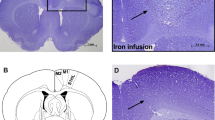Summary
In the posttraumatic period, measurement of neural tissue enzymes in serum and cerebrospinal fluid gives quantitative information about the severity of the head injury. In our study, we evaluated the relationship between the serum and cerebrospinal fluid levels of neuron specific enolase and the severity of trauma. Head traumas at different severity were applied experimentally (Mild 0.038 N, Moderate 0.057 N, Severe 0.3 N). Serum and cerebrospinal fluid levels of neuron specific enolase were measured in trauma and control groups of rats. Only in the severe trauma group, the neuron specific enolase levels of cerebrospinal fluid were significantly increased. There was no statistically significant difference between the groups when serum neuron specific enolase levels were evaluated.
Our data leads us to conclude that trauma, causing significant neural damage, results in an increase in cerebrospinal fluid neuron specific enolase levels, however the serum neuron specific enolase levels do not seem to run parallel with that increase.
Similar content being viewed by others
References
Hardemark HG, Ericsson N, Kotwica Z, Rundstrom G,et al (1989) S-100 protein and neuron specific enolase in CSF after experimental traumatic or focal ischemic brain damage. J Neurosurg 71: 727–731
Bakay RAE, Sweeney KM, Wood JH (1986) Pathophysiology of cerebrospinal fluid in head injury: part 2. Biochemical markers for central nervous system trauma. Neurosurgery 18: 370–382
Hardemark HG, Persson L, Bolander HG, Hillered L, Olsson Y, Pahlman S (1988) Neuron specific enolase is a marker of cerebral ischemia infarct size in rat cerebrospinal fluid. Stroke 19: 1140–1144
Hay F, Royds JA, Davies-Jones GAB, Leurtas NA, Timperley WR, Taylor CB (1984) Cerebospinal fluid enolase in stroke. J Neurol Neurosurg Psychiatry 47: 724–729
Royds JA, Parsons MA, Taylor CB, Timperley WR (1982) Enolase isoenzyme distribution in the brain and its tumors. J Pathol 137: 37–49
Scarna H, Delafosse B, Steinberg R, Debilly G, Mandrand B, Keller A, Pujol JF (1982) Neuron specific enolase as a marker of neuronal lesions during various comas in man. Neurochem Int 4: 405–411
Zomzley-Neurath CE (1983) Enolase. In: Laijtha A (ed) Handbook of neurochemistry, 2nd Ed. Vol 4. Plenum, New York, pp 403–433
Royds JA, Timperley WM, Taylor CB (1981) Levels of enolase and other enzymes in the cerebrospinal fluid as indices of pathological change. J Neurol Neurosurg Psychiatry 44: 1129–1135
Skogseid IM, Nordby HK, Urdal P, Paus E, Lilleaas F (1992) Increased serum creatine kinase BB and neuron specific enolase following head injury indicated brain damage. Acta Neurochir (Wien) 115: 106–111
Hall ED (1985) High glucocorticoid treatment improves neurological recovery in head injured mice. J Neurosurg 62: 882–887
Sarna GS, Hutson PH, Tricklebank MD, Curzon G (1983) Determination of brain 5-hydroxytryptamine turnover in freely moving rats using repeated sampling of cerebrospinal fluid. J Neurochem 40: 383–390
Author information
Authors and Affiliations
Rights and permissions
About this article
Cite this article
Uzan, M., Hanci, M., Güzel, Ö. et al. The significance of neuron specific enolase levels in cerebrospinal fluid and serum after experimental traumatic brain damage. Acta neurochir 135, 141–143 (1995). https://doi.org/10.1007/BF02187758
Issue Date:
DOI: https://doi.org/10.1007/BF02187758



